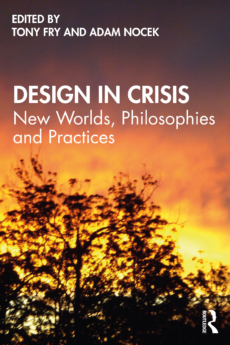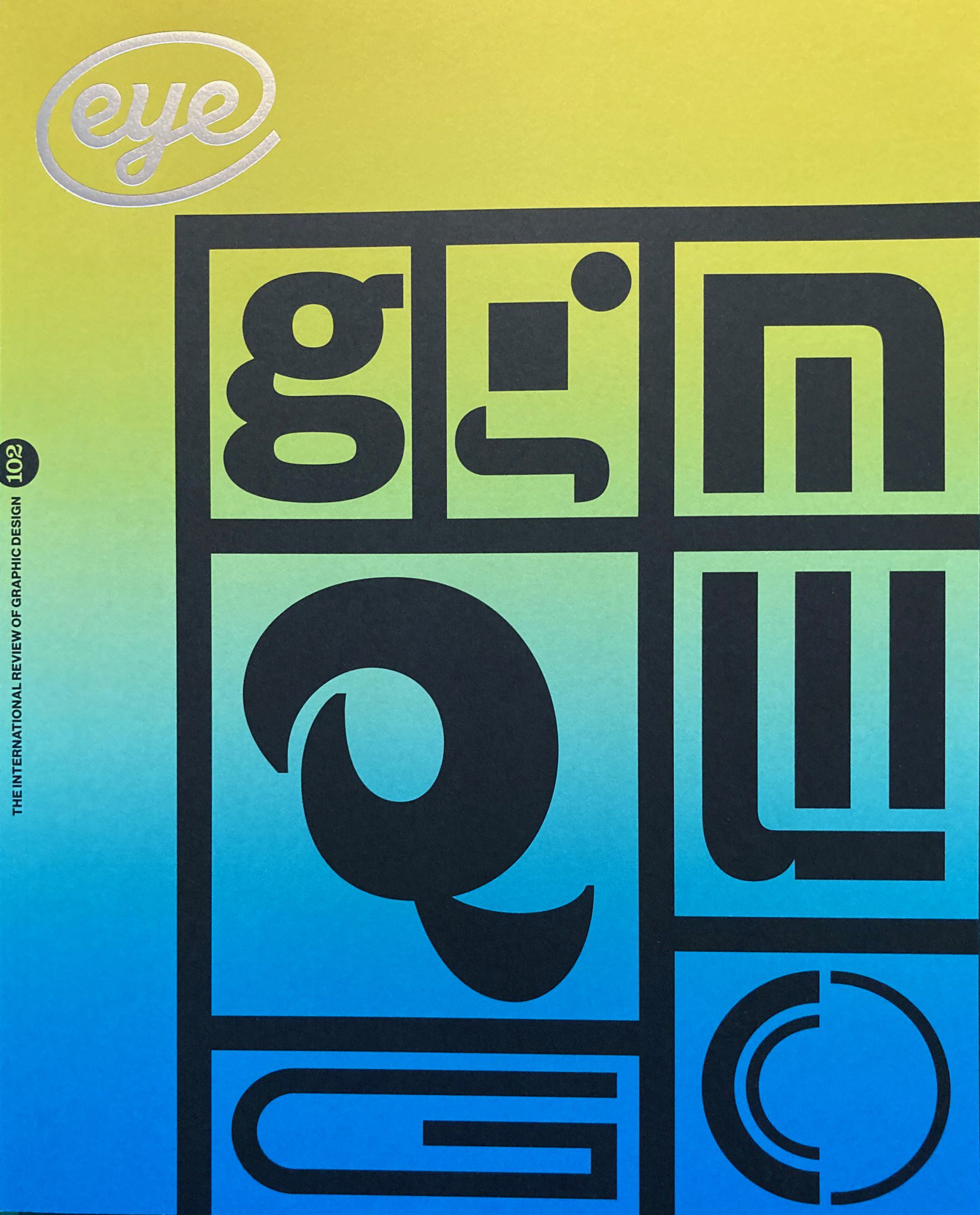Autumn 2021
Crisis by design
Design in Crisis: New Worlds, Philosophies and Practices
Edited by Tony Fry and Adam Nocek. Routledge, £96 hardback, £27.99 paperback/eBookEditors Tony Fry and Adam Nocek present Design in Crisis as part of an ‘ongoing conversation that aims to challenge how designers engage with the planetary crises we are living through’. Rather than viewing design as a panacea for crisis, the book begins from the position that design itself should be understood as a discipline in crisis, given its role in creating and exacerbating social, political and environmental problems. ‘This is a crisis by design,’ the editors write, evidenced through design’s implication everywhere within the ‘unfolding complexity of ecological devastation, racial and political violence, coloniality, technological futures and the brutality of modern Western culture generally’. Nocek is an associate professor in the Philosophy of Technology and Science and Technology Studies at Arizona State University, while Fry has been one of design’s most prolific and tirelessly trenchant critics for more than three decades. The book’s ten articles are divided across three sections, each with a contextualising preface by the editors.
Most of the contributors have had some involvement with the now defunct Design Philosophy Papers, whose framing of design as immanent to the complex structures organising life, is critical to interpreting the texts here. Design is understood throughout as ontological – meaning that ‘the human is a designing being […] whose designs design the human in turn’ – which, writ large, has helped engender the structurally unsustainable condition of globalised modernity. There are few consolations offered, and no attention is spared reflecting on the merits of the design industry’s desires to ‘do better’. If design is to play any role in sustaining life in future, it must become ‘unrecognisable to itself’.
From this cue, Alfredo Gutiérrez (Universidad de Bogotá Jorge Tadeo Lozano) powerfully mobilises an entirely new vocabulary to describe multiple forms of ‘designs with other names’ developed in the Global South, distinct from the ‘invasive monoculture’ of Eurocentric modern design. Arturo Escobar (see ‘A new world of worlds’ by John-Patrick Hartnett in Eye 99) outlines how ‘autonomous design’ (the self-creation of communities) in Latin America can be used to resist ‘violent forms of extractivism central to neoliberal globalisation’. Ahmed Ansari (New York University) critiques the political recuperation of decolonisation within the academy, arguing that the only meaningful conception of the term is one that is resolutely context specific. Shana Agid (Parsons School of Design) examines the Black Panther Party’s People’s Free Medical Clinics and two women’s prison newsletters in order to demonstrate to designers the relevance of understanding ‘the making and knowledge-making of people and social formations […] who refuse, circumvent, or reimagine the systems and spaces in which they live’. Co-editor Nocek explores how algorithmic software creates systems of ‘governmental design’ manifested in objects such as Amazon Echo, which convert the human subject into a ‘valuable resource for information extraction’.
Several entries are bound together through their direct relationship to the environmental crisis: texts by Cameron Tonkinwise and Anne-Marie Willis interrogate how the concepts of ‘sacrifice’ and ‘time’, respectively, might be understood in relation to the crisis; Damian White (Rhode Island School of Design) analyses how the theoretical framework of critical design studies could be invigorated through its application within the context of Green New Deal proposals; Madina Tlostanova (Linköping University) assesses the failures of neoliberal design education, where ‘depoliticised, instrumental and tame forms of design’ are inculcated by universities that ‘refuse to admit the scale of the crisis, and much less, to abandon the convenience of the political status-quo’. The verbose prose of the essay by Clive Dilnot on the collapsing distinction between natural and human-made worlds feels inappropriate for the urgency of the book’s theme, and a tighter edit could have helped elucidate its key arguments.
As a theoretical proposition, Design in Crisis is an outstanding collection of provocative and challenging scholarship. There are some issues, though. The book does not appear to have been proofread by Routledge – I lost count of typos and there are references missing for citations. At one point, a co-authored editorial statement starts speaking in the first person. The paperback version is a poorly produced print-on-demand edition, the ink weakly registered on the page. Given the pressing weight of the book’s subject matter, it might seem absurd to highlight such relatively trivial issues, but they are their own minute symptom of a larger crisis in academia, where metric-fixated institutions pressure academics to publish constantly, and large publishers exploit the outcome by carelessly rushing out extortionately priced content for the lucrative university library market.
This points to a larger question over the book: its radical rethinking of design does not appear to have extended to rethinking the form or location of its own engagement. No matter how much the book attempts to distance itself from the design academy, it is still ultimately a product of it; written using the same kind of language, presented through the same kinds of academic conventions, destined to be read by the same kind of audience. These ideas are important and need as wide a readership as possible – is this the best means to express them?
Cover of Design in Crisis: New Worlds, Philosophies and Practices.

John-Patrick Hartnett, designer, writer, lecturer, London
First published in Eye no. 102 vol. 26, 2021
Eye is the world’s most beautiful and collectable graphic design journal, published for professional designers, students and anyone interested in critical, informed writing about graphic design and visual culture. It is available from all good design bookshops and online at the Eye shop, where you can buy subscriptions and single issues.

